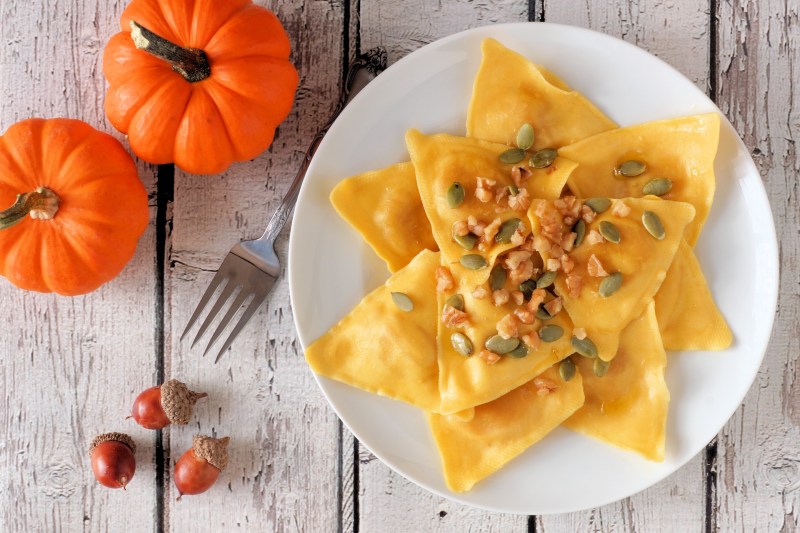
Homemade pasta is one of those special indulgences that’s almost too good to be true. Absolute magic can happen with just the simple combination of flour, eggs, and water. But as simple as homemade pasta is to make, it does require some time and attention. Not to mention the floury mess it can create in the kitchen. So what do we do when our dishes and our senses are craving something more indulgent than boxed or frozen pasta, but we don’t have the time to make it? The answer is a strange one, but it is one of our all-time favorite pasta hacks: wonton wrappers.
Using wonton wrappers as makeshift pasta for ravioli is an incredibly clever way to create a pasta dish that tastes scratch-made. Fill the wrappers with any pasta filling you love – mozzarella and spinach, butternut squash and pine nut, lobster and ricotta, or any other delicious combinations – then simmer and serve in your favorite sauce. You can even use a pastry wheel or small biscuit cutter to create any desired shape to really sell your guests on the “homemade” idea.
This homemade ravioli recipe is our favorite for fall and winter, but feel free to use the wonton wrapper hack all year long.
Butternut squash ravioli recipe
Ingredients
- 1 pound butternut squash, cubed
- 2 tablespoons olive oil
- 3-4 garlic cloves, crushed
- 1/4 cup ricotta
- 1/4 cup Pecorino Romano cheese
- 48 wonton wrappers
- 1 egg
- 4 tablespoons butter
- 8-10 fresh sage leaves
- 1/4 teaspoon nutmeg
- Salt and pepper to taste
Method
- Preheat oven to 425F. Line a large sheet pan with parchment paper set aside.
- In a large bowl, toss the squash, garlic, olive oil, salt, pepper, and half of the sage leaves together, mixing to coat evenly.
- Spread the butternut mixture on the sheet pan in a single layer and bake until cooked through, 30-45 minutes.
- In a small bowl, mix together the ricotta and Pecorino Romano, set aside.
- When the squash is cooked through, place it in a large bowl and mash completely. Add the ricotta mixture and fold in to combine. Season to taste. Set aside.
-
Line 2 large baking sheets with parchment paper, set aside.
- Prepare an egg wash by beating one egg with a splash of water, set aside.
-
Place one wonton wrapper on a clean surface. Add about 2 teaspoons of the squash mixture to the center. Brush the edges with egg wash and place another wonton wrapper on top. Press the edges to seal, taking care to remove all air bubbles. Place ravioli on a baking sheet, and repeat the process with remaining ingredients.
- Bring a large pot of water to a full boil.
- While water is coming to a boil, place butter and remaining sage leaves in a large saucepan and heat on low, melting the butter, and stirring to combine with sage. Keep warm on low heat.
- Gently drop ravioli in boiling water and cook until they rise to the surface, about 1-2 minutes.
- Gently remove ravioli from water and place into the melted butter mixture, tossing to coat.
- Serve warm with additional Pecorino Romano cheese.



